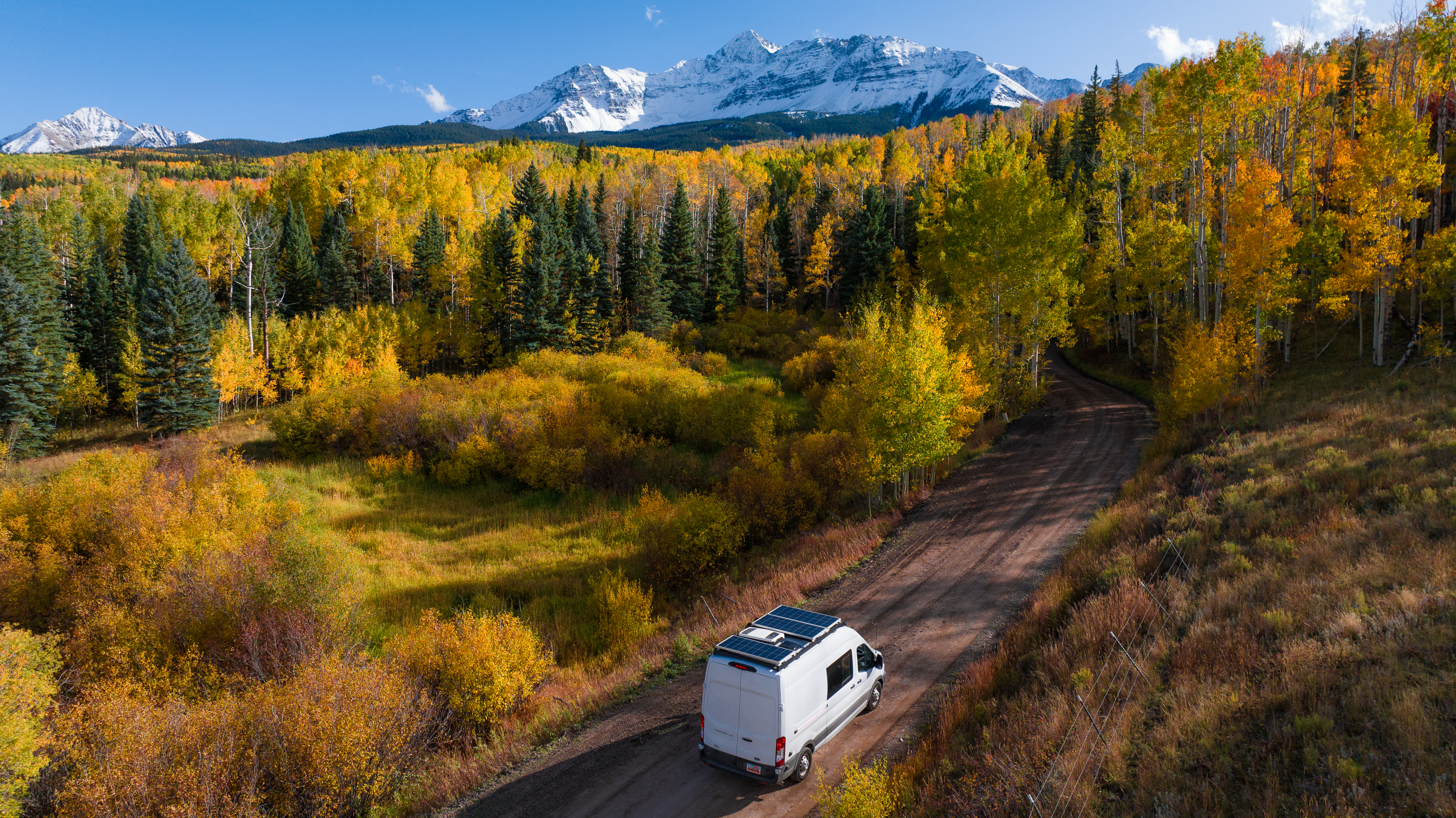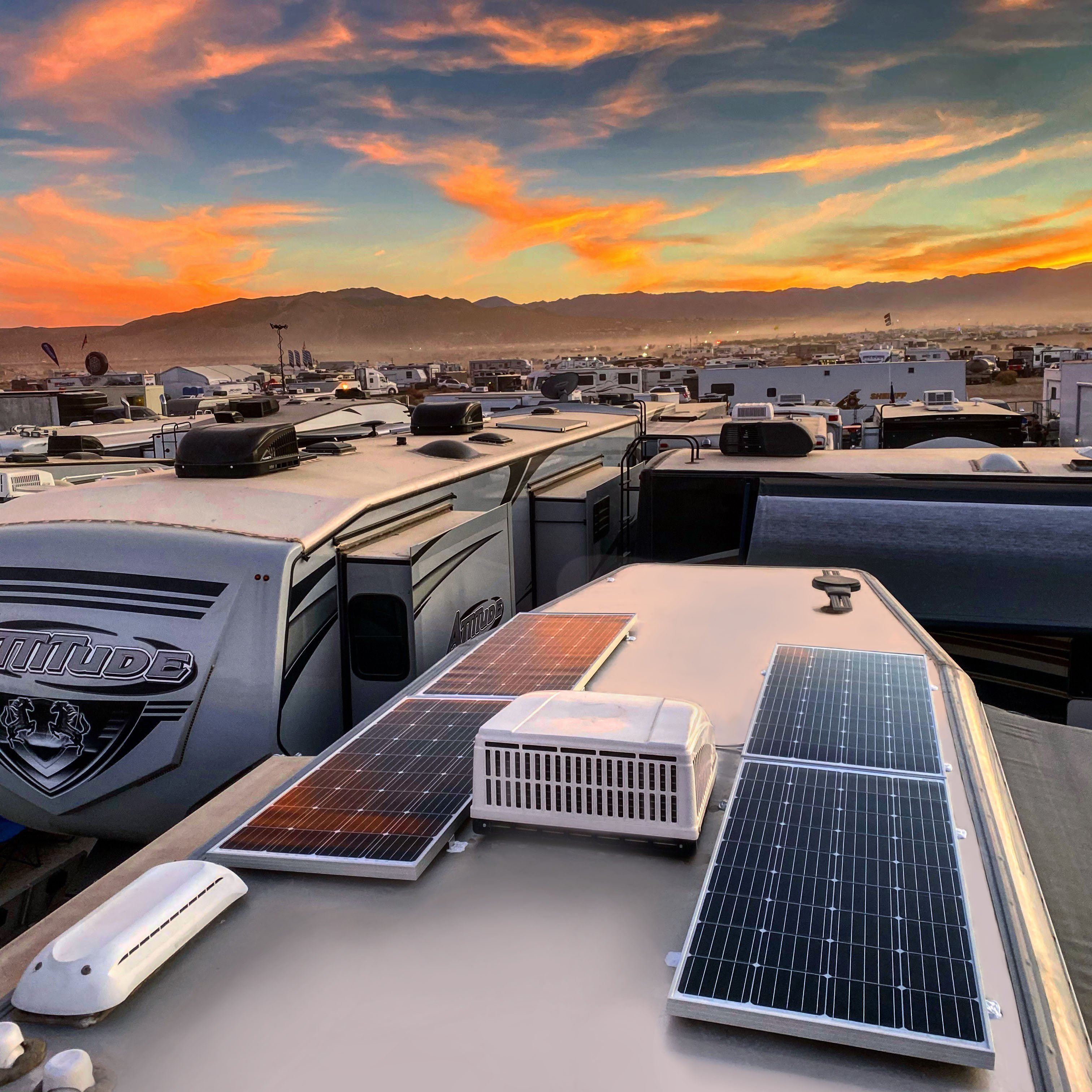Solar power is revolutionizing how RVers experience the great outdoors. Whether you're looking to extend your off-grid adventures, camp more comfortably at rustic campgrounds, or simply reduce reliance on noisy generators, RV solar power can open up new possibilities. But for beginners, diving into the world of solar can seem overwhelming. This guide is here to help you understand the basics, explore battery options, and choose the right solar kit for your needs.
Why Go Solar?
There are numerous benefits to adding solar power to your RV, making it a valuable investment for those who love the freedom of the open road. Here are some of the top reasons to go solar:
1. Cost Savings: While an initial investment in a solar system is required, over time, it pays for itself. Solar power reduces or eliminates the need for campground hookups and generator fuel, ultimately saving you money.
2. Increased Battery Lifespan: Solar panels continuously charge your batteries, helping to maintain their optimal charge level. This leads to longer battery life, saving you from frequent replacements. In fact, some companies, like Go Power!, even extend the warranty on batteries when a solar system is installed alongside them.
3. Off-Grid Freedom: One of the greatest advantages of solar power is the ability to camp anywhere without relying on electrical hookups. Whether you're staying at a remote Harvest Host location or a national park, solar power gives you the freedom to enjoy nature without sacrificing comfort.
4. Eco-Friendly Energy: Solar power is a renewable, environmentally friendly energy source. By switching to solar, you reduce your carbon footprint and contribute to the growing movement toward sustainable living.
Solar 101: Understanding the Basics
Solar power harnesses the sun’s energy through solar panels, converting it into electricity to charge your RV’s batteries. These batteries then provide power to run appliances, lights, and other electronics when you’re off-grid.
The solar setup in an RV usually consists of three main components:
1. Solar Panels: These capture sunlight and convert it into electricity. Panels vary in wattage, and the amount of solar energy they can generate depends on the size of the panel and the amount of sunlight.
2. Charge Controllers: These devices manage the electricity flowing from the panels to the batteries, ensuring they don’t overcharge.
3. Inverters: While your RV appliances typically run on 120V AC power (the same as in your home), solar panels produce DC power. The inverter converts the DC power from the solar panels into usable AC power for your RV's outlets.
A well-balanced solar setup is key to maximizing energy efficiency and ensuring that your system is matched to your RVing lifestyle. If you mostly camp in campgrounds, a small solar setup will do. However, if you enjoy boondocking in remote locations, you may want to invest in a more robust system.

Battery Types: Choosing the Right Power Storage
To make the most out of your solar panels, it’s crucial to pair them with the right type of battery. Here’s a breakdown of the three main types of batteries commonly used in RV solar setups:
1. Flooded Lead-Acid Batteries
- Pros: These are the most cost-effective option and widely available. They're known for their reliability and have been around for decades.
- Cons: They require regular maintenance, such as adding water, and must be stored in a vented area due to the gas they emit when charging. They also have a shorter lifespan and are susceptible to freezing in cold weather.
2. AGM (Absorbed Glass Mat) Batteries
- Pros: These are sealed and maintenance-free, making them ideal for RVers who want a "set it and forget it" solution. They are also resistant to freezing and can be stored indoors, which offers more flexibility in where you place them.
- Cons: They are more expensive than flooded lead-acid batteries and heavier, which can be a concern if weight is an issue in your RV.
3. Lithium Batteries
- Pros: Lithium batteries are the premium choice for RV solar setups. They are lightweight, offer double the usable power compared to lead-acid batteries, and have a much longer lifespan. Additionally, they can be discharged down to nearly zero without damaging the battery.
- Cons: They come with a higher upfront cost, but their long-term performance and low maintenance can make them a more economical choice over time.
If you’re looking for an optimal balance of performance, longevity, and convenience, lithium batteries are a great investment, especially if you plan to do a lot of boondocking.

Solar Kit Options from Go Power!
When you're ready to equip your RV with solar power, Go Power! offers a variety of kits to suit different energy needs and budgets. Here's a look at some of the popular options:
1. DuraLite Portable Solar Kit
- Ideal for: Light power needs and first-time solar users.
- Features: The DuraLite kit is ultra-lightweight (less than 10 pounds), making it easy to move and store. It offers a 100-watt panel, expandable up to 300 watts. This portable option is perfect for those who want a simple, on-the-go solution for charging small devices and maintaining battery levels during short trips.
2. Overlander Solar Charging Kit
- Ideal for: RVers looking for a more permanent solution for extended off-grid stays.
- Features: The Overlander kit is Go Power's most popular option, featuring a rugged 200-watt panel that can withstand the vibrations of travel. It's perfect for those who want to expand their solar system over time, as the kit can be upgraded to support up to 600 watts of solar power.
3. Weekender Solar Charging Kit
- Ideal for: Weekend adventurers who want additional power capabilities.
- Features: This kit offers a 200-watt panel combined with a 1,500-watt inverter, allowing you to power standard household appliances like a coffee maker. It's designed for short-term trips, providing sufficient power for lights, fans, and small devices without a generator.
- Ideal for: Serious boondockers with higher power demands.
- Features: The Solar Extreme kit features three 200-watt panels (600 watts total) and a powerful 3,000-watt inverter, which can even run small air conditioners. This system is designed for RVers who want maximum off-grid capability, providing enough power to keep you going for extended stays in remote locations.
Solar power is more than just a trend—it's a game-changer for RVers who want to maximize their off-grid adventures. Whether you're starting with a portable kit like the DuraLite or going all-in with a Solar Extreme system, there's a solar solution to fit your needs and budget. By pairing the right solar kit with the best battery option, you can enjoy longer trips, lower costs, and the ultimate freedom to camp anywhere the road takes you.
Investing in solar may seem daunting at first, but the benefits far outweigh the costs. As more RVers make the switch, solar energy is becoming a standard part of the RV lifestyle. So, why not get started today and enjoy the independence that solar power can bring to your travels?











